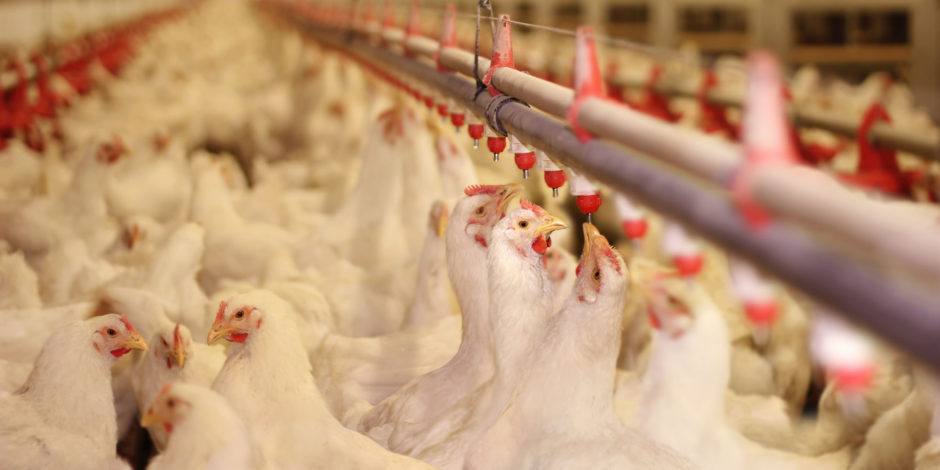Lower Feed Conversion Ratio in Broilers with ExPress® & Hi-Gel™ Corn

The poultry industry measures feed conversion ratio (FCR) – the relationship between kg of feed consumed compared to kg of body weight gain – as a performance indicator for the flock. The FCR by itself is just a number. Sometimes it can be confusing to interpret, because a lower FCR indicates a better conversion coefficient. A lower FCR indicates that a given flock needs less feed to gain more body weight, thus, is more feed efficient. This is important to the poultry industry as feed costs continue to drive up production costs. An efficient FCR has an economic advantage to producers because that means they are getting the most energy, digestibility, and weight gain from lower quantities of feed, saving on total diet costs.
Several factors such as genetics, management, age, production system, and feed quality cause FCR variation of current commercial broiler strains. Therefore, the poultry industry selects specific strains to produce more meat with less feed using the most practical management methods. Indeed, feeding strategies are part of the management focused on getting optimal feed efficiency of animals and profitability of operations which in fact are determined by the cost of feed. Thus, to meet the demands of the increasing poultry meat products it is necessary that the feeding strategies are paired with the selection of high-quality ingredients as mentioned previously.
Furthermore, poultry integrators will control the quality of the main ingredients used in broiler diets when investing in the proper processing technology on farm. Feeding high-quality ingredients, such as ExPress® soymeal, focuses on improving the FCR altogether and results in the ability to raise one additional flock per year in poultry operations. With the proven superior nutritional value of ExPress® soy meal and the advantages of highly-gelatinized high-shear dry extruded corn (Hi-Gel™ Corn) there is a window of opportunities to improve FCR in broilers with 6% less feed in the growing phase, with a peak decrease of 9 points in broilers fed extruded ingredients compared to the control. A decrease of 9 FCR points equates to a 2.5% decrease in feed costs during this phase. It is aligned with those broilers attaining market weight 4.8 days faster with 330 g more BW with respect to flocks fed a common diet based on soybean meal and ground corn.
Take home message: When using high-shear dry extruded ingredients, flocks reach market 4.8 weight sooner, 6% less feed is needed and the FCR is improved, as indicated. It undoubtedly has an impact on the profitability of any poultry operation which is variable depending on the regional market situation but definitively and advantage in terms of savings.



